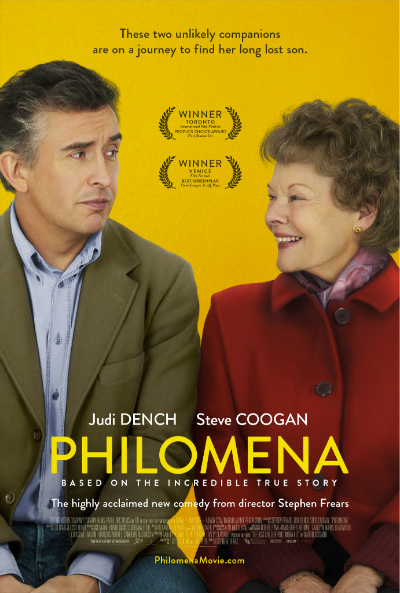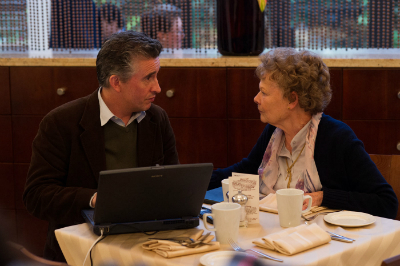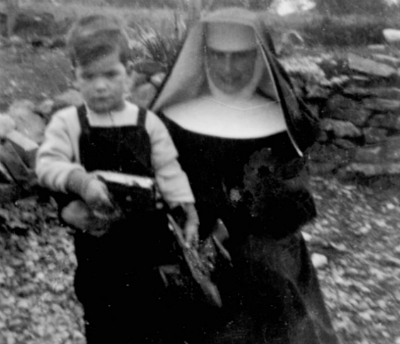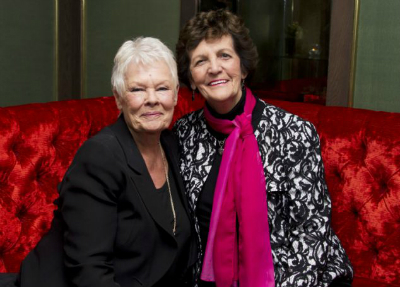This guest post by Julia Patt appears as part of our theme week on Dystopias.
Contemporary audiences best know Fritz Lang’s Metropolis for its unlikely restoration after museum workers discovered several missing scenes from the film in Brazil in 2008, 80 years after the film’s 1927 release. An archetypal depiction of the class struggle, Metropolis continues to influence dystopian landscapes, from George A. Romero’s Land of the Dead to The Hunger Games.
In the opening scenes of the film, we learn that the Metropolis is in fact two cities: the wealthy city above and the workers’ city below. Our protagonist is Freder (Gustav Fröhlich), son of the Metropolis’ Master, Joh. Freder differs little from the other men of his class—indulging in meaningless contests in the city’s stadiums, enjoying the comfort of elaborately dressed and painted women in the Eternal Gardens, and completely oblivious to the trials of the working class. It’s only when Freder encounters Maria (Brigitte Helm) that he deviates from the course set for him.

In this first scene, Maria brings a large group of children up to the Eternal Gardens so that they may see the people who live there. “These are your brothers,” she says again and again, perhaps addressing both groups. While the other visitors seem alarmed by the newcomers and move away, Freder stands transfixed, watching Maria.

He then learns of the deplorable conditions in the city, but only because he follows Maria underground. There he sees terrible accidents, men lagging with fatigue at their posts—all the horrors of the industrial world with its vast inequalities. Afterward, he tries to explain the conditions to his father, who is unconcerned, so much so that he casually dismisses one of his own employees to go join the ranks at the machines.
Although he prevents the man’s suicide and saves another from exhaustion, Freder can find no overarching solution or purpose apart from pursuing Maria and at several moments bids these other characters to wait for him. He’ll find answers, he seems sure, when he finds the woman who has so shaken him. He’s not wrong, either. When he later finds Maria—more than 30 minutes after her first appearance—she is delivering a modified sermon about the Tower of Babel, ending with the maxim: the mediator between the head and the hands is the heart.
Maria essentially makes Freder the chosen one—she inspires him to go underground and gives him his purpose when he awakens to the dystopian system in which he lives. Without her, the story does not proceed and the system continues unopposed.
Joh, Freder’s father, immediately recognizes the danger she presents and turns to the inventor, Rotwang, to help him discredit her. They decide to give Rotwang’s greatest creation, the Machine-Man, Maria’s face. It’s worth noting, however, that the Machine-Man had a female form well before this plan—Rotwang created it to replace the woman he loved. Joh and Rotwang are naturally delighted with the Machine-Man version of Maria, calling it the most perfect and obedient tool. Each believes that the Machine answers only to him, although it is ultimately unclear whether the Machine has motivations of its own. (“Let’s watch the city go to the devil!” it exclaims toward the film’s conclusion with noticeable glee.)

It does, however, fulfill its joint purpose, which is to bring chaos to both the city above and the city below. In the Metropolis’ nightclubs, the Machine dances, driving the upper-class men to violence and delirium. Below, it incites the workers to revolution and encourages them to destroy the machines that keep both cities alive and functioning.

Thanks to the Machine’s efforts, the Metropolis comes close to complete destruction, with the workers’ children trapped in a flooding city below and the wealthy stalled by massive power outages above. Rioting breaks out as the two classes encounter each other on the surface. However, Maria saves the workers’ children—with Freder’s assistance—and later, the mob unwittingly destroys the Machine-Man. After seeing his son nearly die, Joh has a somewhat convenient change of heart and, with Freder’s help, joins hands with the worker’s foreman.
All this comes at the hands of one woman and her doppelganger—equal forces for peace and chaos. But Maria isn’t a character with much agency or screen time. Freder’s pursuit of her dominates our attention throughout the film. And ultimately she is not the mediator, rather only the inspiration for him, the original Trinity to Neo’s Chosen One in The Matrix.
Maria is an unusual character in other respects. It’s unclear what her position or profession is, although it seems likely she might be a teacher or a minder for the children, and she doesn’t quite seem to belong to the working class. Neither does she seem to spend time with other women. Only men come to the meetings she calls; in fact, we see no women workers at all until the film’s final act.
There seems to be a suggestion, then, that only men can overthrow the oppressive society—we see three men clasp hands at the end of the film to show that peace is possible. Aside from the women in the mob of workers, women in Metropolis remain isolated, surrounded by crowds of men. Perhaps unsurprisingly, there is no moment of: “These are your sisters.” However, without Maria, revolution seems unlikely. She threatens the status quo by calling her meetings; she inspires Freder to leave the city above and witness the city below. Her image—properly manipulated—is enough to create division within both societies, but she also contributes to the unity.

The Machine-Man, of course, has even less control over its destiny. Its appearance is stolen, an appropriation of Maria’s body for the benefit of the patriarchal upper class. If it loves chaos and seems devious, we should remember that it was designed to behave as it does. It is an ideal tool because it appeals as women as meant to appeal without any desires or notions of its own. But it’s worth noting that the other women of the upper city are also tools of the patriarchy, used for a particular end other than their own determination, however willing their participation in the system might appear.
Ultimately, Metropolis gives us two images of how women function in repressive societies—as revolutionary visionaries and unholy temptresses. However, it falls short on both sides: they can neither overcome nor create the dystopian world as they choose.

We find a similar duality of character in François Truffaut’s adaptation of Fahrenheit 451, based on the novel by Ray Bradbury. The film deals similarly with a male hero of the dominant society awakening to the realities of the world around him: Guy Montag (Oscar Werner). Montag belongs to the enforcement class—he burn books—and lives a comfortable if unhappy life with his wife, Linda (Julie Christie).
Linda is the picture of complacence. She consumes the media her society dictates, wants what her culture tells her to want, and questions little.

We wouldn’t know anything of her unhappiness, save for the fact that in her second appearance in the film, she has apparently overdosed on pills. It’s never settled satisfactorily whether she did this intentionally or by accident. The emergency crew treats it as a routine occurrence, so it seems likely that Linda represents the typical woman of her station—lonely, uneducated, and lacking control over her life in any meaningful way.
Montag is visibly shaken by the episode, but only to a point—he is in the midst of a transformation inspired by Clarisse, a woman he meets on the train. In a deft move by Truffaut, Christie also plays Clarisse, distinguished from Linda only by her short hair.
Although he is not as immediately taken with her as Freder is with Maria in Metropolis, Montag clearly finds himself drawn to Clarisse. (She is often regarded as one of the original manic pixie dream girls.)
He seems happy to see her again and goes so far as to visit the school where she works with her after she’s fired. He particularly seems moved by her emotional response when the children don’t remember her—she cries the tears Linda can’t.
But most importantly, Clarisse puts Montag on the path to his awakening by asking him, “do you ever read any of the books before you burn them?”

Clarisse, like Maria, is an active participant in a movement to change the way her society works. She warns a man at the beginning of the film that the firefighters are on the way to his house. She doesn’t teach the way she is directed to and she challenges all of Montag’s preconceptions about the world in which he lives. However, as with Metropolis and Maria, Fahrenheit 451 is not Clarisse’s story. And strikingly, the dual casting of her and Linda suggests that the two play complementary roles in Montag’s life. One represents the inadequate if safe life he’s lead and the other the intellectual freedom and curiosity he learns to want. But under slightly different circumstances, Clarisse might have been Linda or vice versa. Their individual desires, while relevant, do not drive the narrative the way Guy’s do. Rather, like Maria and the Machine-Man, they represent the two possibilities in particular dystopian systems—their roles largely determined by the needs of men in those societies, be they revolutionary or otherwise.
Ultimately, what are we to make of these manic pixie dream girls with their unusual ideas? Is there a moment when they might do more than inspire others and take real revolutionary action on their own? And is it possible to tell the story of a woman coming to the same realizations that Freder and Guy do?
Or, does it all come back to the creation of the Machine-Man—the ultimate symbol of society’s desires with no identity of its own?
Recommended Reading: “Reproducing the Class and Gender Divide: Fritz Lang’s Metropolis”
Julia Patt is a writer from Maryland. She also edits 7×20, a journal of twitter literature, and is a regular contributor to VProud.tv and tatestreet.org. Follow her on twitter: https://twitter.com/chidorme
















